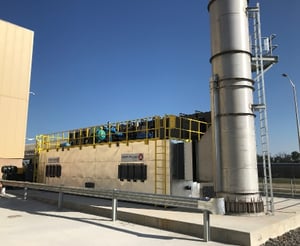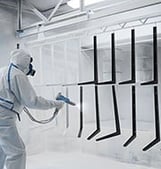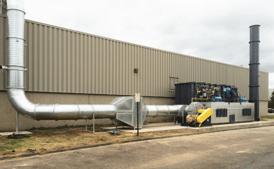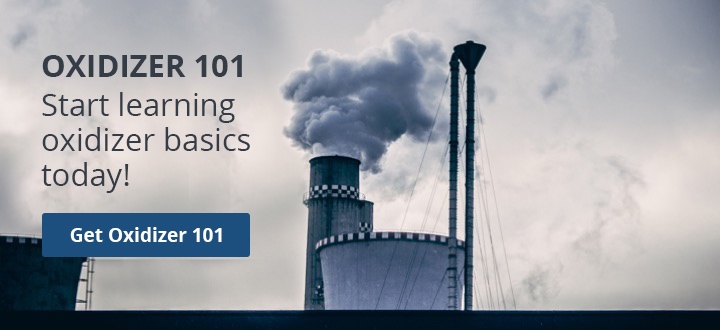The application of these solvent based finishes, while improving product performance or extending product life, releases significant emissions of Volatile Organic Compounds (VOCs) and solids into the environment. VOCs react with nitrogen oxides (NOx) in the presence of sunlight to form ground level ozone and as such are regulated as an ozone precursor under EPA’s criteria pollutant program. Thermal oxidation is a widely used technique to eliminate the VOCs and other air pollutants from these paint booth processes.
VOC emissions are typically found in the following areas of a surface coating operation:
- During the application of paint – Spray booth exhaust VOC control
- Flash off areas (low air movement)
- Curing or bake oven exhaust (large majority of emissions found in the step.)
- Paint storage areas
- Paint mixing VOC control
- Storage tank venting VOC control
 A Regenerative Thermal Oxidizer (RTO) is recognized as the most effective and cost-efficient way to thermally destroy the VOCs from these processes. During operation of the RTO the VOCs are ducted into one of the system’s regenerators, an internally insulated vessel containing specialized ceramic media which allows thermal rate efficiencies up to 97%. The contaminated gases are passed through the first regenerator where energy is transferred from the ceramic media to the gases in order to elevate the temperature of the gases. After reaching this elevated temperature which approaches the ignition level for most solvents, the gases are directed to the internally lined combustion chamber. In the combustion chamber minimal heat is added to ensure a proper oxidation temperature and designed dwell time and turbulence are maintained providing destruction of the VOCs at greater than 98% efficiency. The resultant clean, oxidized gases are redirected into the second regenerator bed to continue the energy transfer and oxidation cycle before being released to the atmosphere.
A Regenerative Thermal Oxidizer (RTO) is recognized as the most effective and cost-efficient way to thermally destroy the VOCs from these processes. During operation of the RTO the VOCs are ducted into one of the system’s regenerators, an internally insulated vessel containing specialized ceramic media which allows thermal rate efficiencies up to 97%. The contaminated gases are passed through the first regenerator where energy is transferred from the ceramic media to the gases in order to elevate the temperature of the gases. After reaching this elevated temperature which approaches the ignition level for most solvents, the gases are directed to the internally lined combustion chamber. In the combustion chamber minimal heat is added to ensure a proper oxidation temperature and designed dwell time and turbulence are maintained providing destruction of the VOCs at greater than 98% efficiency. The resultant clean, oxidized gases are redirected into the second regenerator bed to continue the energy transfer and oxidation cycle before being released to the atmosphere.
Additional considerations during the coating operation is the method of capturing the VOCs. Typically, the spray process will be conducted inside a paint booth, where it is possible for the entire booth to become a permanent total enclosure (PTE). However, in some cases this many not be practical, due to the size of the parts, or the nature of the coating process. In these situations, it may be more practical to provide close capture hooding to capture the VOCs. For more information regarding enclosures, see the following links:



 A
A 





